




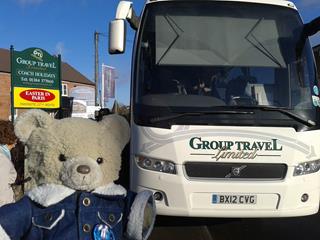
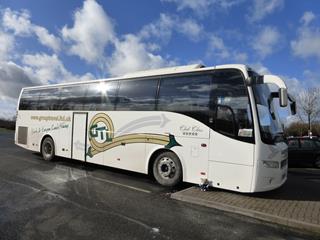
We had a forty-five minute stop at Strensham Services as Mick had been driving for two hours. There were signs up outside everywhere advertising Galaxy Ripple McFlurrys. That sounded like a good idea so we went and asked but apparently they are not available until 11am! We were leaving at 10.55am so sorry McDs but you lost a sale. Seems stupid to advertise something widely but not have it available. Their loss. We wandered the shop and chatted to some cute dinosaurs for a bit, then went back to the coach, pausing to take a picture of one of several crows that were hanging about the car park. Not sure there was enough for a murder though! (It's the collective noun for a group of crows! Keep up!)
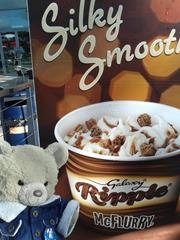
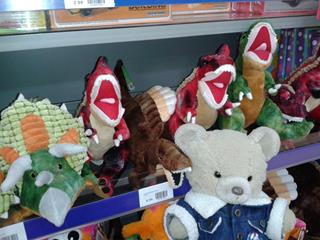
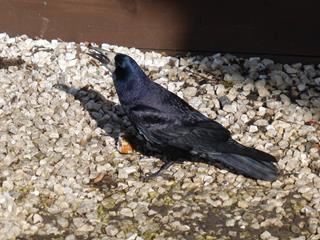
We arrived in Bristol a little after noon and those that wanted were able to get off in the city. The rest of us stayed on to to cross the river to the ss Great Britain.



 I'd not been before. It cost the assistants £14 to go in, but it's one of those tickets that lasts all year so you never know, we might come back again.
I'd not been before. It cost the assistants £14 to go in, but it's one of those tickets that lasts all year so you never know, we might come back again.
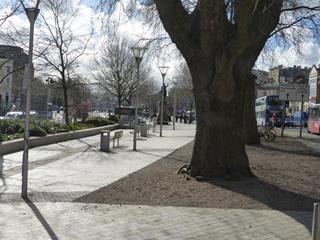
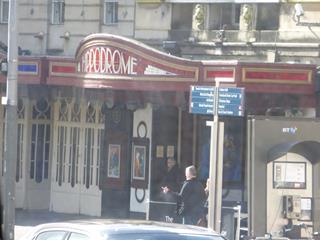
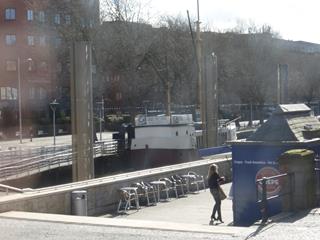
We met some friends on the coach - Pat and Allan, who are regular travellers with me, they even did my first trip to America - I didn't know they were on the coach until we got to Bristol. We caught up for a bit, then I headed in to see the ship.
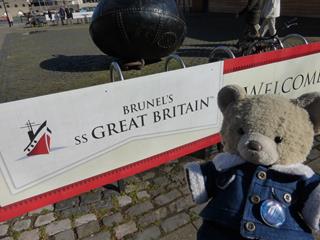
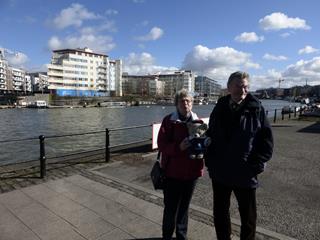
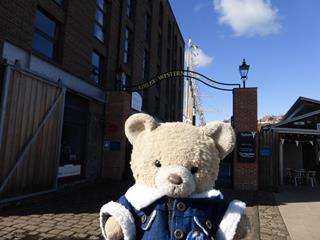
We had a bit of a wander around the dockyard before boarding the ship. For now it wasn't raining so we thought we'd make the most of it. Isambard Kingdom Brunel designed the ss Great Britain, which was the first screw-propelled, ocean-going, iron-hulled steam ship, as well as the largest ship in the world at its launch in 1843. Designed for the emerging trans-Atlantic passenger trade, the ship carried 252 first and second class passengers and 130 crew.
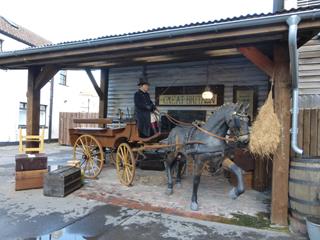
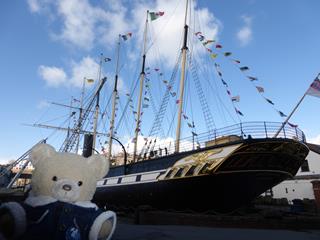
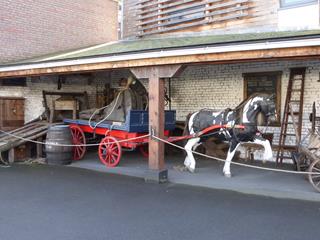
We headed Under the Sea, down some stairs to the underside of the ship in dry dock - the dry dock which was dug especially to build this ship back in 1839. They have very cleverly put a thin layer of water at the waterline to give the effect of the sea, but the water is fully enclosed and well away from the ship's hull. Below the waves is a very tightly controlled humidity level which aims to prevent further rust and decay. (If you were wondering, the chap below left is Flat Stanley - he's from Chicago and is a traveller, like me!)
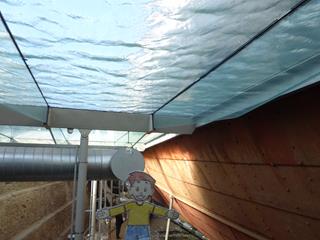
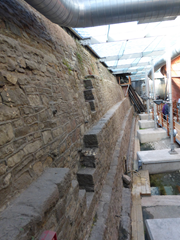
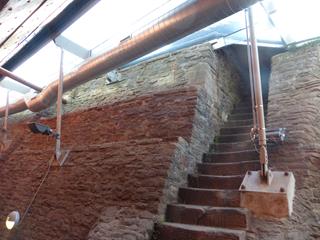
Brunel figured a ship made of wrought iron would be lighter, yet bigger and stronger than a ship made of wood. Lighter means faster and fewer structural supports mean more room for cargo.
You are able to walk all around the ship and even touch the hull, although in some places it does say please don't pick off the loose bits! It doesn't seem that big from underneath although the propellor would suggest otherwise. There are a number of holes in the hull from when the ship was scuttled in the Falkland Islands in 1937. There is a crude patch applied in 1970 as part of the salvage operation which covers a crack that appeared after the ship was abandoned in 1937.
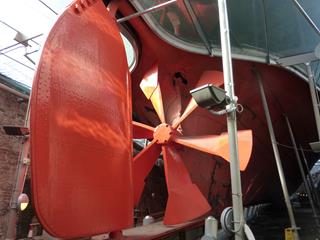
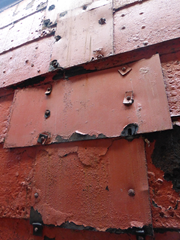
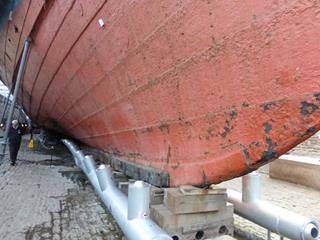
The anchor (below right) is an original from the ship in 1852. The bent shaft indicates it was hit by a large force at some point in it's lifetime. Below right is a 1928 Caisson, which keeps the water out of the dry dock. It is weighed down by iron weights and water and sits in vertical slots in the sides of the harbour. When a ship is ready to leave, the weights are removed and it floats to be towed away. There is now an additional hidden concrete dam which takes the load of the water to protect the ship.
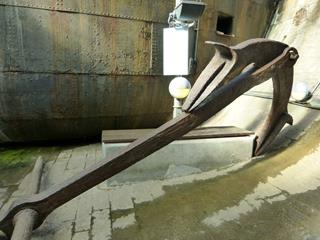
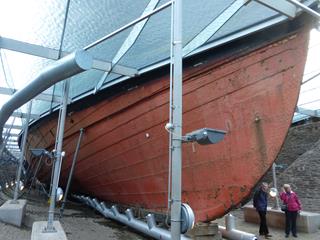
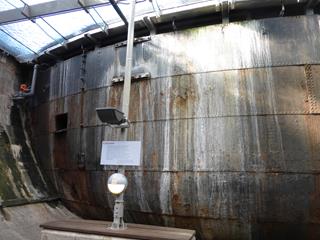
We returned to ground level into the yard surrounding the ship. It is recreating a busy scene of luggage and supplies waiting to be loaded onto the ship.
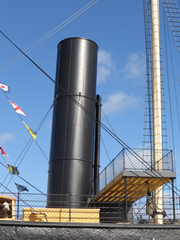
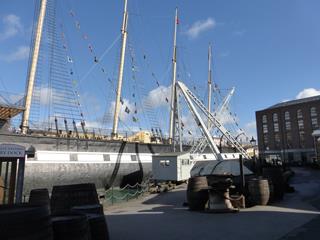
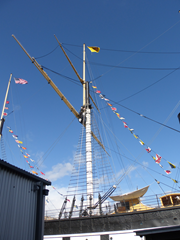
They next direct you into the Museum. This takes you through the history of the ss Great Britain. In 1843, Brunel built the world's largest ship, of iron, with a 1000hp engine as an ocean liner. In here - if you can get the pesky kids out of the way - you can have a go at steering the ship into the sun.
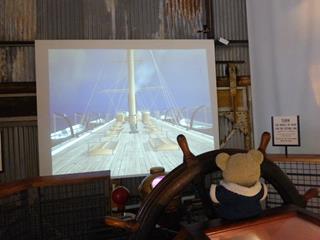
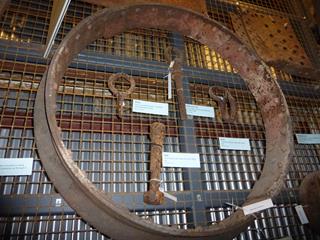
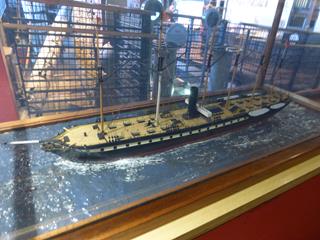
In 1852, Gibbs, Bright & Co purchased the ship to transport emigrants to Australia - they installed a more efficient engine, added a second funnel and replaced the propeller and rudder with new ones. Planning to rely on sails wherever possible - to save money - the engine and propeller would only be used when necessary. A lifting frame enabled the crew to lift the propeller out of the water into a chamber in the ship's hull to reduce drag. We watched a couple do it but it looked way too much like hard work for my lot! They also built an additional upper deck to increase capacity to 700 passengers.
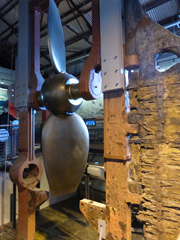
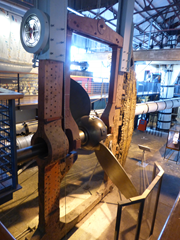
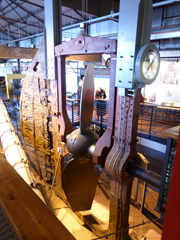
After 32 voyages to Australia, the ship was no longer suitable for this purpose. In 1882, the ship had another change of purpose, switching to cargo. Her engine and funnel were removed providing greater cargo storage space, as well as being cheaper to run. The ship had three tall masts and broad square sails - this type of ship was known as a windjammer. In 1886, the ss Great Britain was severely damaged by storms off Cape Horn. The Captain sought refuge on the Falkland Islands but the ship's owners decided repairs to the ship would be too expensive and sold it to the Falkland Islands Company who used her for the next 47 years as a floating warehouse.
In 1933, the ship's working life was over and the ship was left to rust. In 1937, the ship was towed to Sparrow Cove, a remote bay near Port William, and scuttled in its shallow waters. However, naval architect Ewan Corlett recognised the importance of the ship and attempted to recover it. In heavy gales, the salvage team was able to refloat the ship in 1970 and used tugs to pull it 8000 miles across the Atlantic on a floating pontoon, returning it to Bristol. My assistant Paul apparently visited her back in the 1970s shortly after she had returned to the UK!
It was time to head to the ship itself. There were two or three school groups milling about but they weren't too much trouble for stickies. Wandering the ship was great. Of course I had to do my Titanic bit, but it was a bit windy and Di was concerned I might fly away or fall overboard, so I didn't really do it justice!
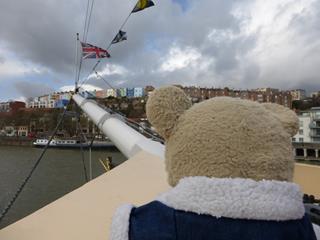
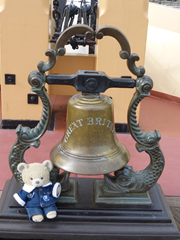
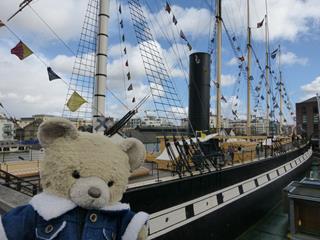
We looked up in the rigging and people were climbing it. You can pay to do this (with a safety rope) but Di insisted the season for that hadn't started yet. She may have been lying, but it looked pretty cool. Maybe if we go back we can do that? I sure as hell don't want to even think about doing it at sea!
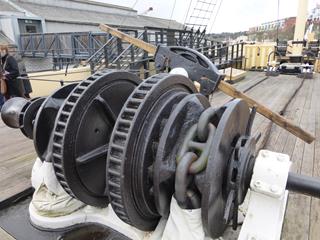
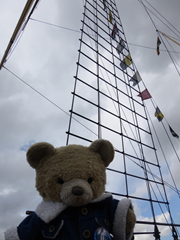
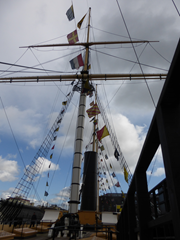
As we clambered about the deck it got colder and started to rain a bit so we didn't hang about for too long before heading inside. We spotted this white line to separate first class passengers from the more peasanty folk. Not sure a white line would be enough these days. I had a go at steering but it was a bit windy - this is the only way I could stay in shot for a picture! Eek! Eventually, we were getting cold and wet so we went down a floor to the Promenade Deck and took a look around.
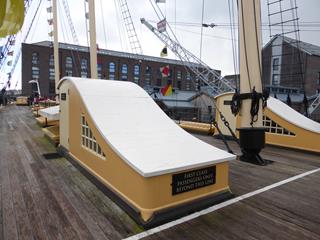
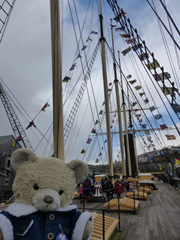
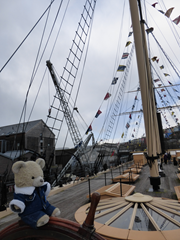
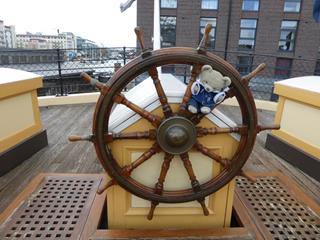
These chaps were having a conversation (I think we might be lost!) so I didn't interrupt and had a jump over the bunks in a cabin instead. Very compact but private! There was a bit of a lounge area here so a bit more room to sit about outside of the tiny cabins.
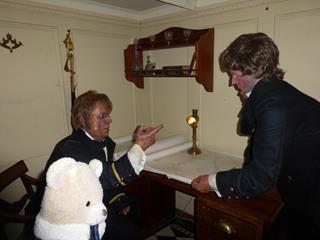
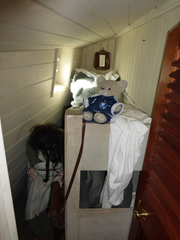
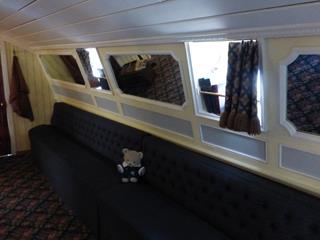
We had a look inside the engine room - I could explain how it all works but I know you're not really interested. Coughs
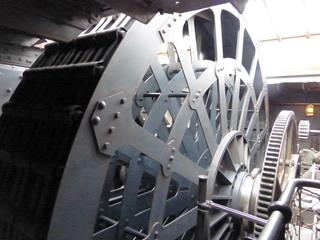
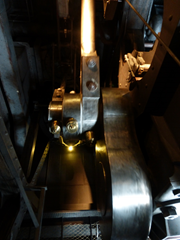
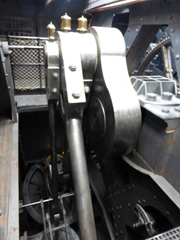
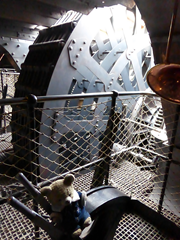
We entered some larger, shared cabins - this one had four beds, but we had to be quiet cos there was someone asleep in one of em.
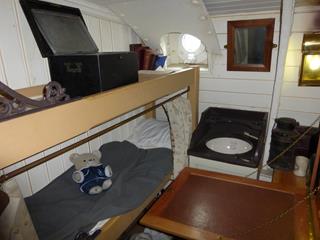
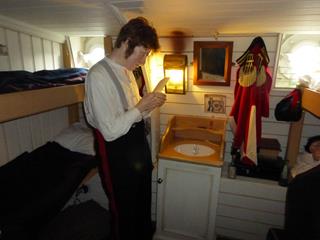
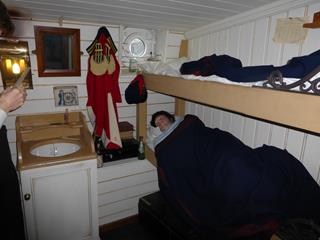
The guy running the kitchen seemed to be shouting a bit. It looked pretty hectic but the food didn't look bad (for fake food, obviously).
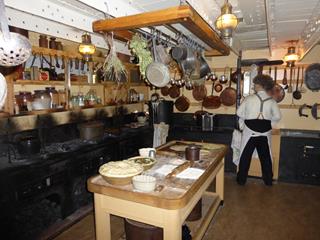
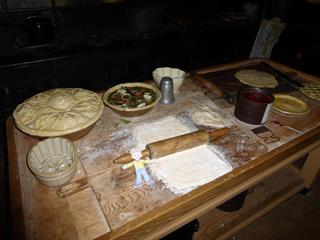
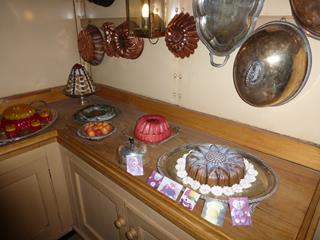
They had a nice display of bread here, but I could've done without the display of washing up. Realistic though.
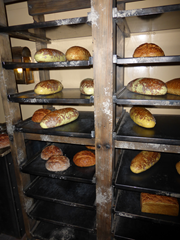
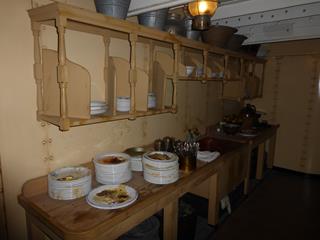
The next cabin had a monkey in it - I think he learned this trick from Theo! The large open area is the Promeade Saloon and would be available to the passengers to meet and chat. The various cabins were off this section.
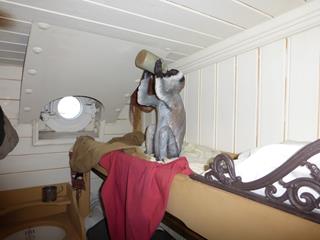
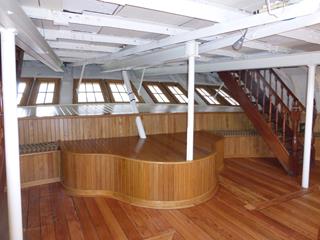
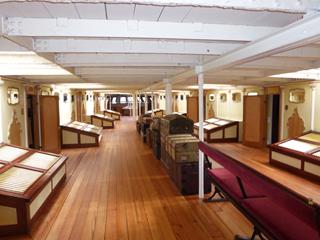
There was a doctor and a barber on board for the guests so they wouldn't arrive all hairy...or dead. This guy (below left) had a cut hand. The bunks in this cabin had privacy curtains, so I'm guessing they were shared cabins, rather than for folks who booked a private one.
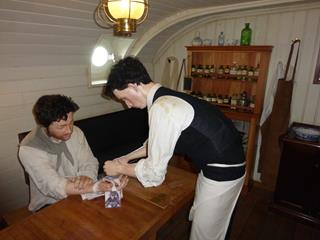
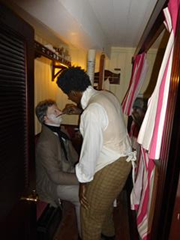
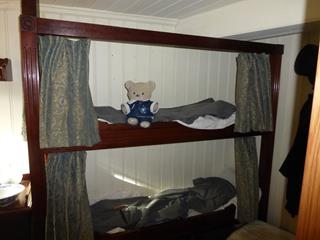
We headed towards the front of the ship to the Steerage accommodation. There was a bit of a fracas going on in here! Ladies please! The beds were a bit more basic, but we did at least find the bar! Oh yeah, and we found some barrels of cider too.
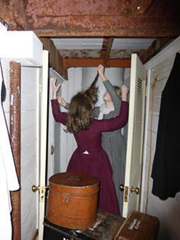
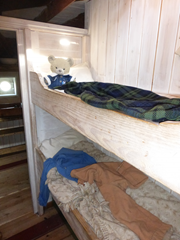
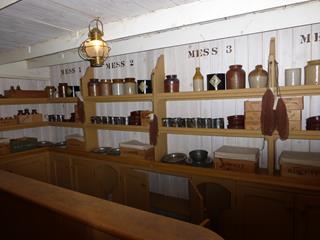
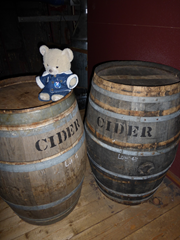
We descended another level towards the bottom of the boat and the Saloon deck. I was somewhat surprised to find horses in here - including sounds and smells! No, they were not real ones, but you can imagine how difficult it was having livestock aboard these voyages. There's not much room for exercise.
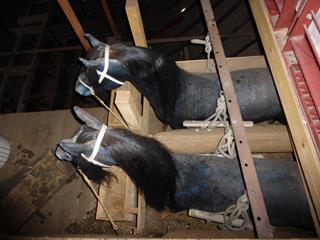
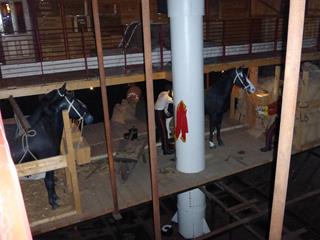
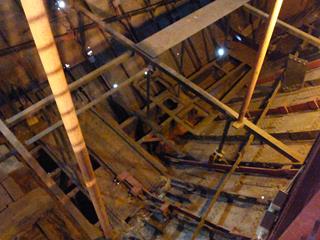
We entered the Dining Saloon. There was obviously a party about to start as the band had set up and some of the food was already laid out. Considering the size of the ship this was a pretty big room.
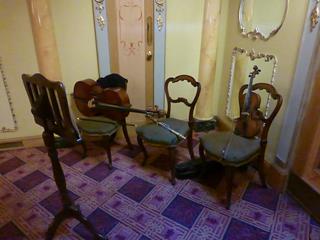
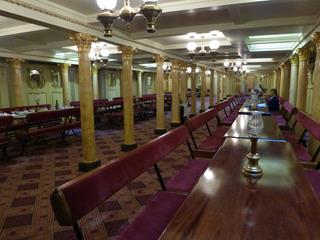
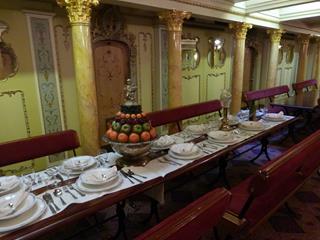
We exited back through the museum, so I said hello to Mr Brunel - I imagined he'd be taller. I took a closer look at this model before emerging back outside to get this photograph of the great ship.
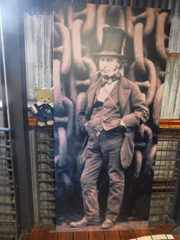
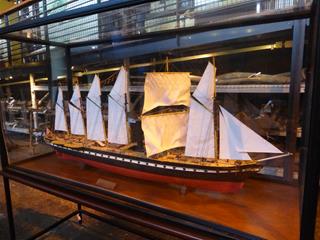
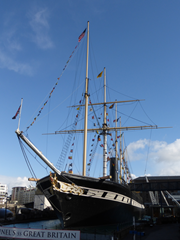
As we walked around the outside of the ship you could get a better look at the at sea effect with it really looking like the ship is in the water.
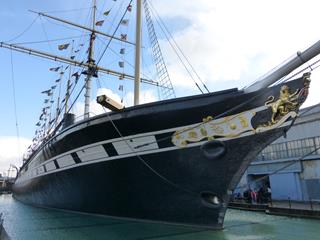
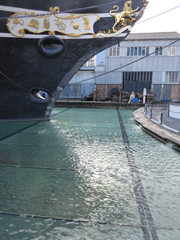
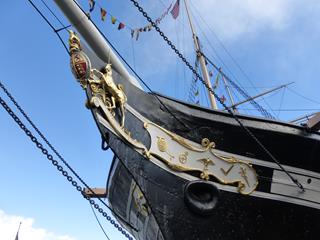
Once we were done with the ship, we headed into the gift shop. Big surprise (I am so predictable). They had the usual tourist tat with the ss Great Britain logo on it but they had some other stuff too. They had the usual shelves of sweets and rock with this particular place name on it, but I did find some Made in Bristol chocolate so I bought some of that. There was also some old-fashioned advertising materials like Cadbury, Marmite and the like that you could buy on a selection of merchandise. Overall it wasn't a bad shop and the proceeds go back into keeping the ship afloat (well, not literally) so I didn't feel so bad about spending all Di's money, though it wasn't the cheapest gift shop I've ever been in.
It was just after 2pm when we were done with the ss Great Britain and we could either walk, or get the ferry, into the city or we could get lunch. We'd seen online there was a café and, like the gift shop, the proceeds go towards the upkeep of the ship. They also had local beer so that was good enough for us. We ordered toasted sandwiches and I had a Norcutts Pear Cider, while Assistant Paul had a Bath Ales Gem beer. The sandwiches were freshly done, nice and hot and didn't take too long. Mine was very good. I'd also ordered a lemon meringue muffin and though the muffin was a teensy bit dry, the overall package was pretty good.
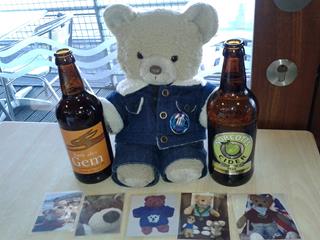
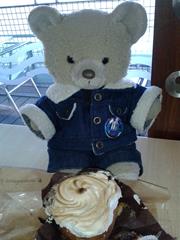
By the time lunch was over it was just after 3pm and by that time we figured it really wasn't worth going into the city - we had to be back on the coach by 4pm. We weren't sure when the next water ferry would be or how far it was to walk (assistants had been too idle to research!) Besides, despite the sun being out it was pretty cold. We took a bit of an amble up the riverside and found what looked to be a railway siding with some kind of small platform. There was no sign to say what it used to be though. A little googling says it's the Bristol Harbour Railway, a preserved railway that only runs on certain weekends apparently. It seems I didn't take a photo either! However, I did get these great shots of a passing ferry with Grommit at the bow.
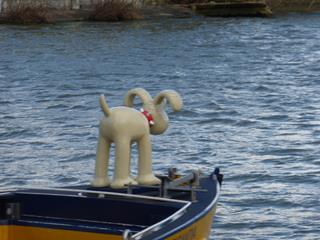
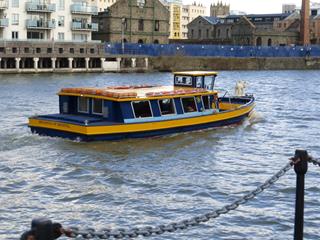
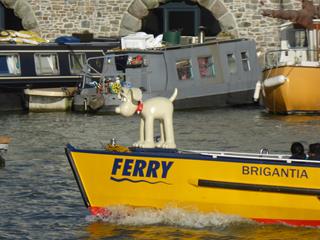
We wandered back and had another ten minutes in the gift shop before returning to the bus for 4pm. Then we headed into the city to pick up the rest of the group. We parked just outside the Bristol Hippodrome, which is where actor Cary Grant began his acting career.
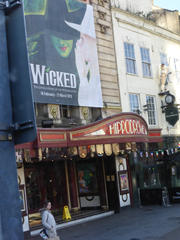
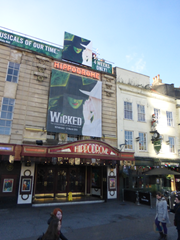
We started for home and had a fifteen minute bathroom break at the new Gloucester Services on the way home. Oh. My. Bear. I'd seen this place on the BBC TV show Countryfile a week or two before so knew of the place but wowee, what a place! Owned by local farmers, it is virtually invisible as this was a requirement of them being allowed to build it. The roofs are covered in grass so they just blend in.
There's a take away shop where you can pick up freshly made sausage rolls and pies and stuff - they smelt wonderful. There's a restaurant with fresh looking food but there was no time for a closer look.
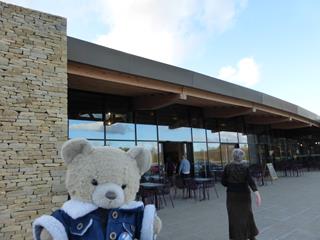
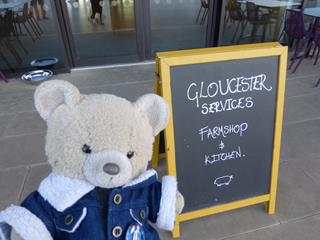
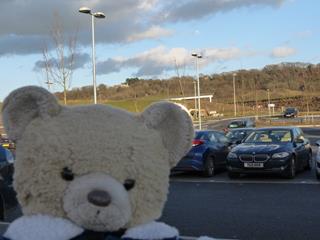
We did have time for a whizz around the shop. It was like a lot of other farm shops with a variety of local produce on sale and not really any more expensive than you'd find elsewhere. While there was a lot of local produce there was also specialty foods from around the world - like Australian chocolate!
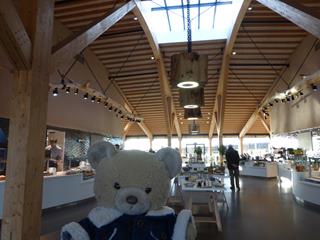
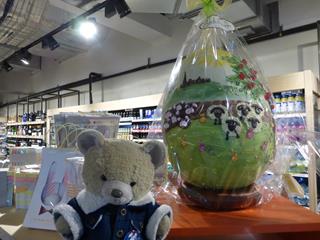
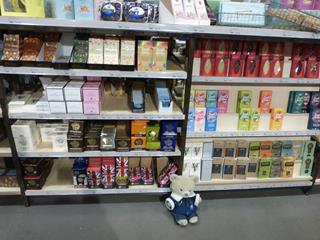
With a fifteen minute stop we were soon back to the coach and heading for home.
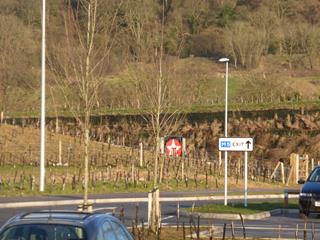
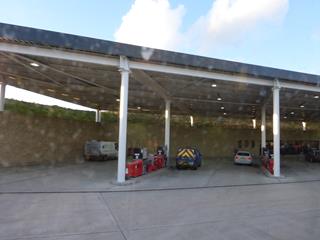
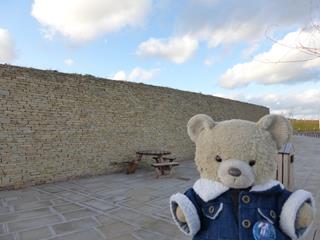
We arrived back at HQ around 6.30pm. We'd had a good day and, although cold, mostly dry so not a bad day out - especially for free! Thanks Group Travel!
comments powered by Disqus